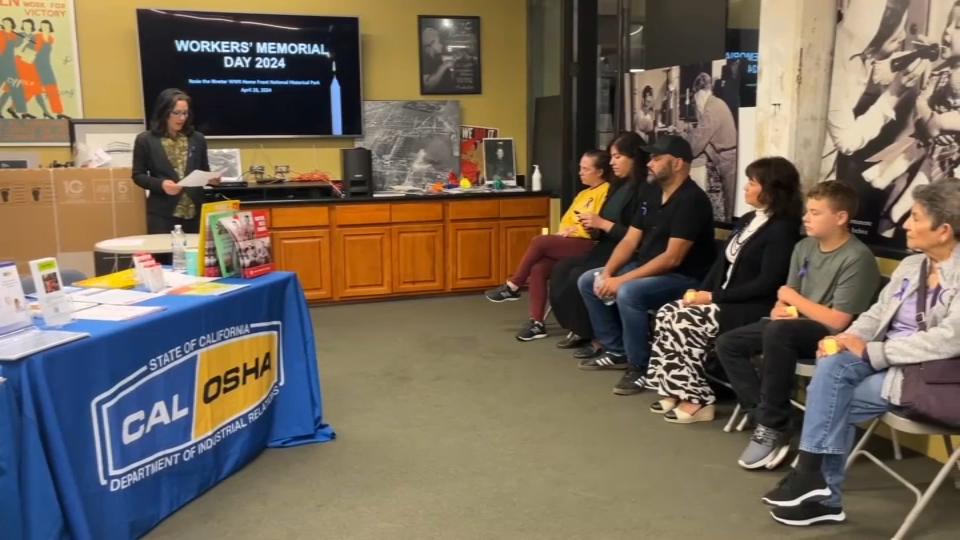The now leaning and sinking Millennium Tower’s troubles may have been avoided had the city building officials heeded experts’ warnings that helped doom a similar project that was deemed at risk of sinking dramatically on Bay mud, an NBC Bay Area News investigation shows.
The 58-story Millennium was the heaviest and tallest concrete building on the West Coast when completed in 2009. But the tower at 301 Mission St. had sunk some ten inches soon after it was completed and is now leaning to the north and west.
It could ultimately sink nearly three feet, according to a study commissioned on behalf of condominium owners, who include the likes of 49ers legend Joe Montana. Owners have already started to file lawsuits stemming from the tower troubles.
At the corner of Mission and Fremont streets, signs that the tower is in trouble are everywhere. The sidewalk is cracked, the tower’s elegant stone facing is askew.
The problem is even evident at a distance, to a trained eye.
"You can even see it from the Bay Bridge, because the other buildings are plumb, and this one isn’t,’’ said Larry Karp, veteran soils engineer who said the Millennium Tower’s troubles are unique in his six decades of experience. "This is something new."
But an investigation by NBC Bay Area shows that the building troubles might have been avoided had the city’s building inspection officials heeded warnings on the similar project, slated to be built on land now occupied by the Transbay Terminal.
Local
The warnings came in mid-2004, when Millennium was still on the drawing boards. That was when the Department of Building Inspection ordered construction halted on a 52-story project at nearby 80 Natoma St. in part because of a threat that it could sink into the watery clay and sand South of Market.
The then head of the building inspection department, Frank Y. Chiu, said in a legal declaration in October 2004 that he ordered a work stoppage in light of experts’ warnings that the 80 Natoma St. project could sink more geotechnical consultants estimated in the sandy, watery clay soils South of Market.
One of those experts, Massachusetts Institute of Technology geotechnical professor Charles Ladd, estimated that the 52-story planned Natoma Tower would likely sink at twice the extent predicted by the builder’s consultants of five inches.
Ladd expressed what he called "considerable concern’’ that such a building could sink "under the stresses imposed’’ on the old bay mud beneath it.
Ladd warned the building might sink some 11 inches and tilt due to uneven soil conditions.
In response, the city’s top building official took the extraordinary step of stopping the Natoma project in mid-2004.
The official, Chiu, explained his rationale in a deposition concerning the stop work order.
"Settlement of this magnitude" he said, "could cause cracking of the building, displace adjacent structures, and increase the risk of serious damage to the building in the event of an earthquake."
While the Natoma project ultimately died, the same type of foundation design lived on through the Millennium project.
Like the Natoma project, Millennium’s foundation is a thick concrete slab supported by piles resting on bay mud and sand, not bedrock. Experts say that such a foundation poses a distinct sinking risk in bay mud – and the city building officials should have done more to account for that risk in the Millennium project.
"This is a much bigger building," said engineer Jerry Cauthen, who was involved in the planning of the nearby Transbay Transit Terminal. "A much heavier building sitting on worse soil, designed apparently by the same geotechnical firm that designed the 80 Natoma building.’’
Cauthen said that given the warnings about Natoma, the city should never have approved a similarly designed foundation used by the Millennium project. The local firm that did the soils report on both projects – Treadwell and Rollo – has had predicted both of the buildings would sink just a few inches.
The firm declined comment for this story.
Back in 2004, a top official with the firm, Richard Rodgers, dismissed any doubts about the Natoma project.
The "company is not in the habit of designing buildings that are prone to failure" Rodgers said, adding that the firm’s "reputation stands on its own."
The soils report on the Millennium project reviewed by NBC News reveals that the firm’s engineers did acknowledge back in 2001 that the millennium could sink as much as an inch in a quake. The saturated soil under its foundation, the engineers concluded, is "susceptible to liquefaction" in a major quake.
Karp, the veteran soils expert, worries that the Millennium Tower will lurch, not just sink in such a quake.
"That’s a real big problem," he said. "If the building is now leaning and all of a sudden is subject to strong motion, it’s going to lean more."
The Millennium builder said it obtained all city clearances and building officials said the engineer who was most knowledgeable about such projects was not available for comment.



